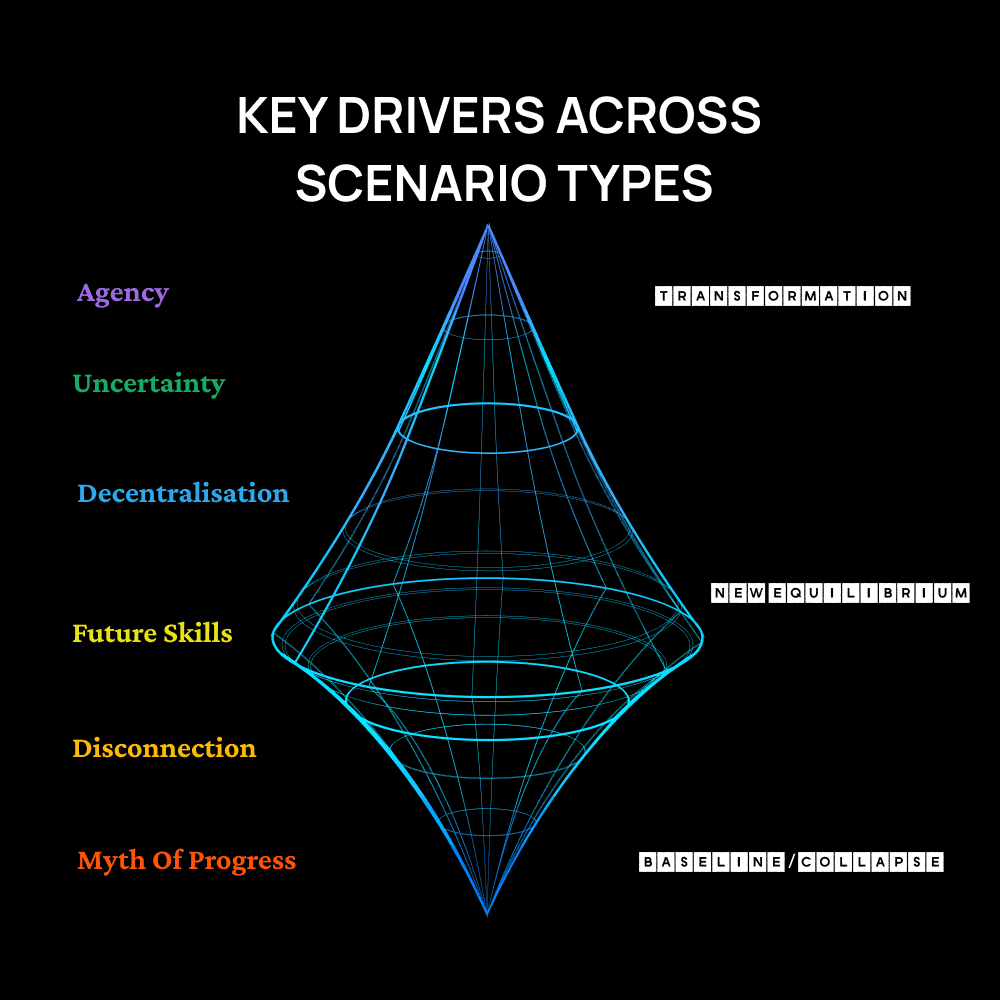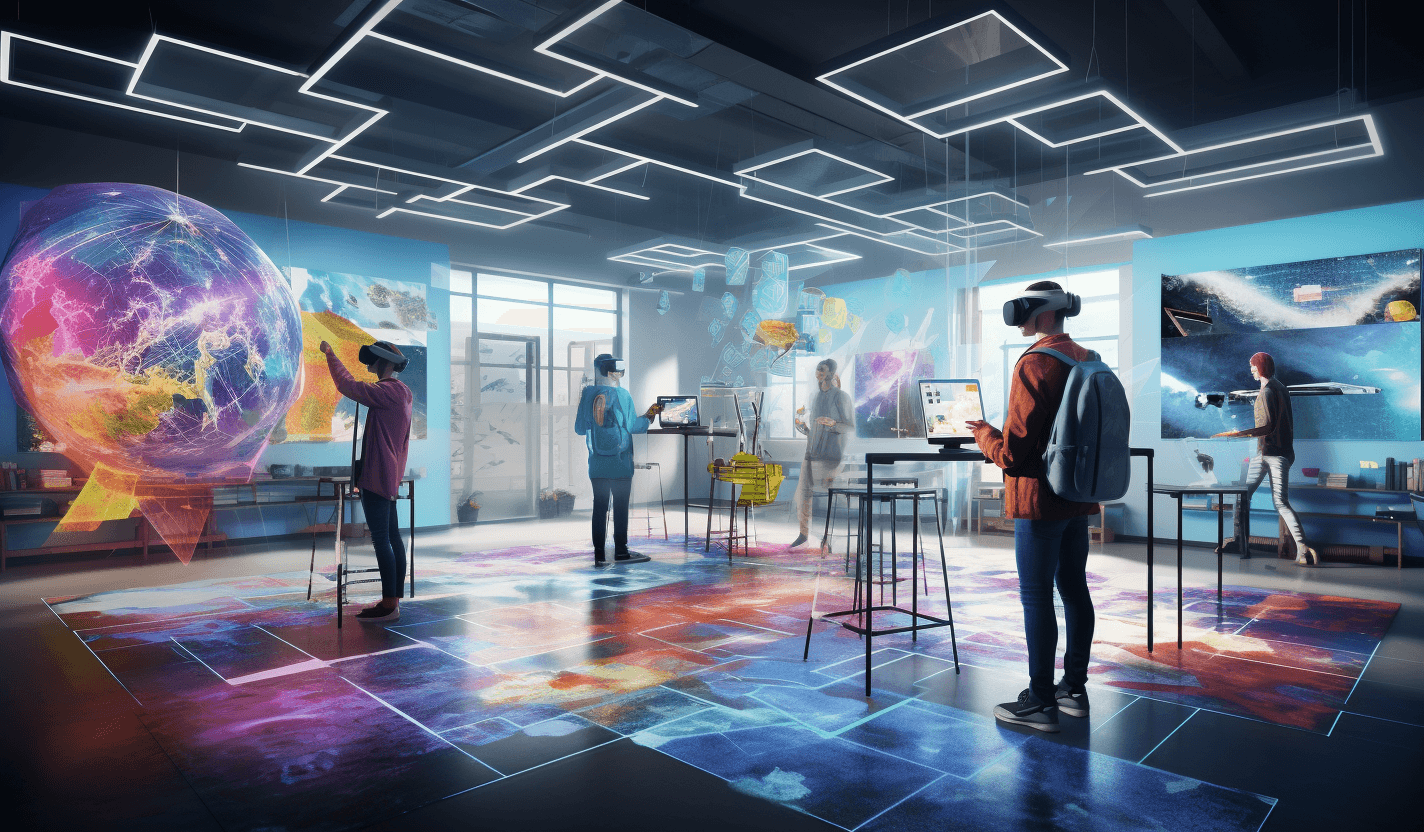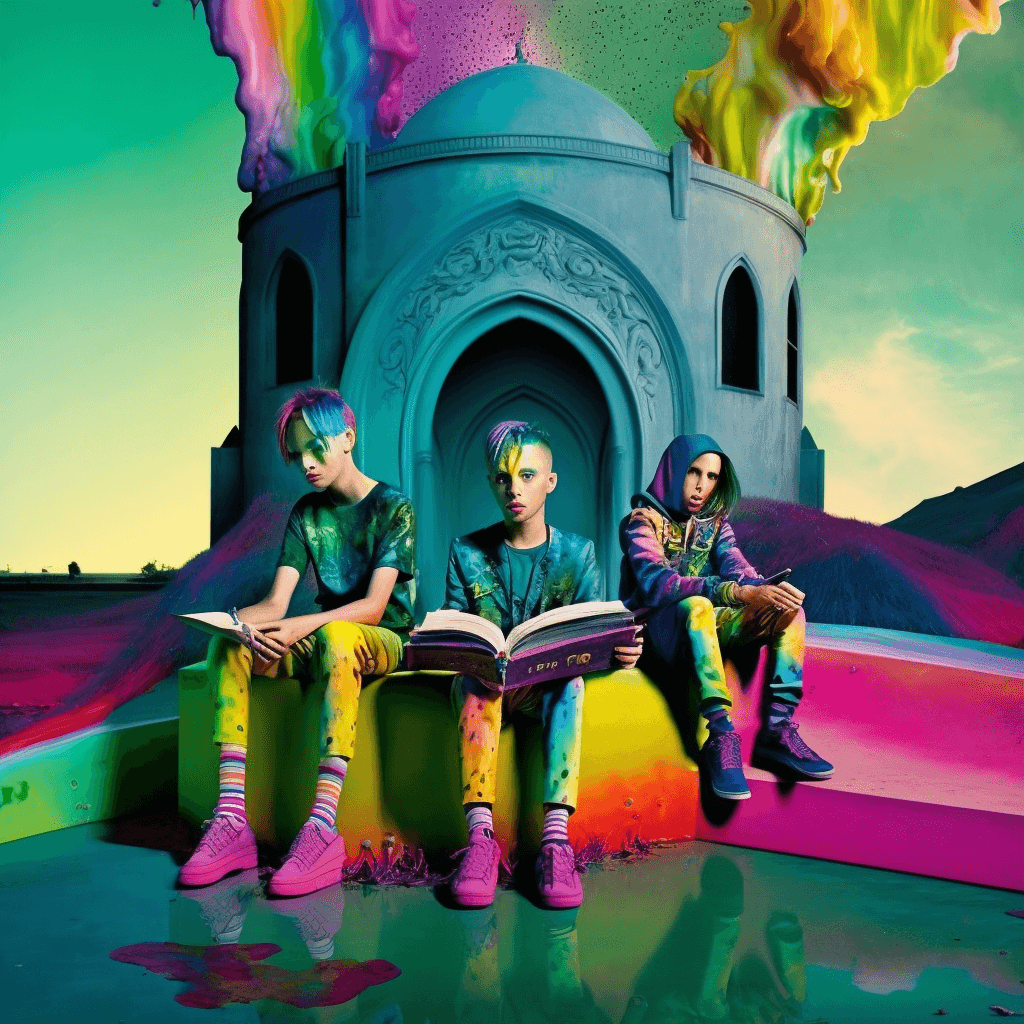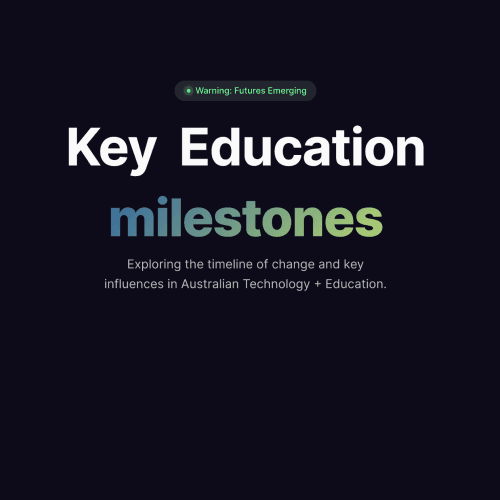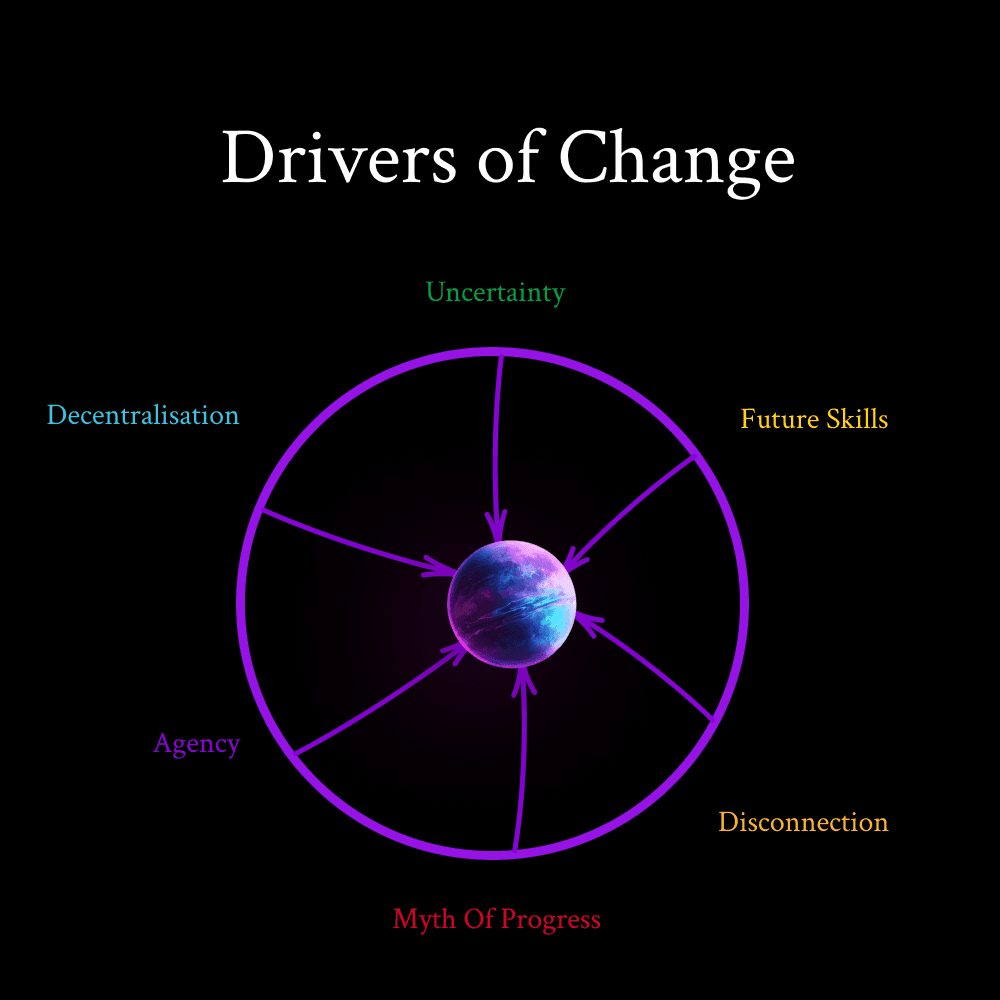Behind the Scenes
Explore the chain of custody from
which this scenarios was developed.
BREEDS emergent resilient systems of change
Education policymakers' historical approach of technology as an addendum to education is widely accepted as self-limiting and dangerously incorrect. Apropos to this legacy axiom, is the idea of technology as something we can shape and employ instrumentally, rather than something which shapes us. However the past impacts of social media and the increasingly virtual experiences of younger generations, have showed this to be unquestionably false. In this new state, education leaders have driven major reform to reconceptualise learning in the face of new technology futures. They have been human lighthouses amidst a sea of increasing uncertainty and complexity, reminding us of the ways in which we ourselves have always made sense of the world . . .
Corporate learning leaders bolstered by the motivation of economic output, have accepted this to be true for some time as we observed their swift bypassing of linear learning systems and tech fads. In the early 2030s we see education leaders go to war on the curriculum dichotomies of fact and skill, labelling them as polarising and incomplete foundations for possible futures ahead, and education's role is redefined as one of sense-making. Included in this reform is a redefinition of the roles of teacher vs student, to be redefined as learner and leader - both necessarily interchangeable roles dependent on context and pedagogical domain knowledge at play.
The Online Manifesto adopted by government leaders, reminds us that technology impacts the kinds of ideas we value, the quality of attention we pay, and our conceptions of self and world. Emergent learner innovations demonstrate the potential for new forms of behavior, values, and thought, even when they are not explicitly instructed to do so. It's starting to seem like we might be able to place our trust in this new educational ecosystem after all.
FUTURE SKILLS
A NECESSARY REFRAME TOWARD SENSE-MAKING
The focus of decentralised education leaders within this increasingly autopoietic system, is not how to improve classroom teaching, but rather, how to build on the process of organic learning that we know starts with young children as they begin to develop their sense of the world.
The Online Manifesto adopted by government leaders, recognises that being part of this hyperconnected world to its fullest future extent, will impact, shape and in many ways, redefine learners' concepts of self, agency, interaction and reality. Indeed it will also redefine the way we think about open access information, collective intelligence and the development, ownership and evolution of knowledge itself. Welcome to the age of the knowledge commons.
The current educational policy framework in 2033, acknowledges the more likely case, that it is us the policymakers, educational leaders and parents , who are not fluent in this new language of future. This explicit recognition of the decreasing authority of intergenerational knowledge transfer, sparks a major cultural shift as education leaders (and parents) acknowledge that the challenge to continually identify and evolve future sense-making skills is critical to preparing learners for the future. Moreover, it is a challenge that must be shared by both leaders and learners alike. The schools of the past, have no place in this future system.
And yet; it is the education leaders and learners embracing this new equilibrium, that will shape our possible futures for the years to come.
Pick any paper from the 2020s and you will see countless headlines about 21stC skills for the 'Future of Work'. In the current day (2033) education leaders commonly accept that this language functioned in many ways, to decrease agency in its suggestion that the future was somehow singular and already predetermined in some way, - we just had to prepare students for it. Both leaders and learners have reframed that space away from 'future preparedness', toward an agency-driven positioning - one of future skills in sense-making. The phrase is suggestive of a shared challenge for leaders and learners, a common goal and one that is not directed at a kind of 'future destination' for which we must be prepared, but rather, one which invites possible future adventures ahead, through shared discovery and sense-making - to wherever we end up. Just as the STEM programs of the past decade taught learners via computer programming, to speak in a language both they and computers could understand. Today learners and leaders are developing a shared understanding of both current and emergent sense-making skills, as they build their agency-powered muscles of connection and contribution in the myriad of ways that continue to emerge in these new shared futures.
FROM HISTORIES PAST
Education policymakers' historical approach of technology as an addendum to education is widely accepted as self-limiting and dangerously incorrect. Apropos to this legacy axiom, is the idea of technology as something we can shape and employ instrumentally, rather than something which shapes us. However the past impacts of social media and the development of sophisticated metaverse experiences within younger generations, showed this to be untrue.
Marshall McLuhan's theory that 'technologies are not simply inventions that people employ, but are the means by which people are reinvented' has shown itself to be a theory of change more relevant than ever in this future state. Just as the advent of the publishing industry did not just increase communication, but also created the 'author' and necessarily a 'public'; so too, did social media create the role of 'social influencer'. Unlike historical persons of influence or charismatic charlatans, the modern social media influencer's primary value was the ability to connect and interpret the world, through a shared system of meaning, redefining notions of expertise amid a noisy landscape of information, through new modes of connection and distributed networks of increasing influence.
FROM PRE-DIGITAL IDEAS
In a transformative state, education leaders and policymakers' reform signals the end of this disconnection between our historical denial of technology's power to shape us and our experience of technology in the real world. The disconnect here, is from our own history; as we come to terms with the limits of our attempts to sustain pre-digital ideas about learning and indeed, life.
FROM HORSELESS CARRIAGES
The historical Myth of Progress that is legacy edtech, would have us believe technology-inclusive pedagogy is surplus to the efficiencies of new learning systems. We now know this presumption to be incorrect at the deepest level. As an adult competent in math, you may not be able to easily solve a Year 9 equation; but the foundations of math learning, enable you to be fluent in a more expansive mind framework of logic, puzzles, problem-solving and paradoxes. Learning leaders have reconceptualised foundational domains of knowledge and their dynamic pedagogical models to encompass this new technology-driven operating context. Technology takes its rightful place as both a lens with which to make sense of the world, and a tool to shape our possible futures within it.
legacy edtech has left the stable
The horseless carriage of steady state has bolted. The conservative bias of edtech systems responsible for the homogenising myth of the 2020s; that the delivery of historical, linear methods of learning via new technologies would satisfy changing needs, has been dismantled. The WHAT and the HOW may have been easier to dispense and measure, but the sum of these parts in no way added up to the whole that new futures required. The continual decline in Australia's OECD academic measures demonstrated the fragility of the dominant narratives of the 2020s; but many education leaders now view that period in retrospect, as the necessary invitation to shape a new future.
By the time we reach 2033, the historical edtech market has long been recognised as inherently problematic in pedagogical approach (or lack thereof), not to mention transparency, privacy, portability and interoperability. The establishment of the Critical Digital Futures Foundation (CDFF) encompasses both education and business leaders, creating a space for collaboration and consideration of second and third order implications, of any new technology applying to receive a 'responsible tech' classification.
Student and teacher concern over privacy and ownership of personal data has been recognised as paramount to the production of agency, and integrated into educational law. Google classroom and other major platforms have been disestablished, as has the siloing of educational technology versus real-world technology.
PARTICIPATORY POWER
The notion of digital presence for many students in the decade prior, consisted of regrettable social media postings with intermittent scatterings of digital literacy and e-safety thrown in for good measure. But the arrival of authentic digital connection and learner sovereignty was no panacea.
Genuine learner agency and participatory power were achieved in large part, due to the tireless efforts of innovative policymakers who systematically deconstructed the hierarchies and binaries that defined the historical model. To their credit, they foresaw the pedagogical value of open dynamic educational approaches, designed to feed this autopoietic system. Inputs which embraced systemic uncertainty, and continued to evolve and re-form in response to the world around them over time. In 2032 led by these same policymakers, the Australian government passed 'The Education Agency Act' (EAA) which legislated this open dynamic systems model already underway in many independent schools, and rolled it out across the nation.
In a transformative future state; the primacy of enabling intellectual structures to be built by the learner, not taught by the teacher, becomes the driving force in all education policy. The role of technology in the development of personal agency, provides a community of practice, helping learners understand how to be in this space. Australia adopts the Domain of One's Own initiative some 15 years after its inception, creating space for learners and leaders to explore, discover and document their learning adventures. The nationwide initiative enables learners and leaders to exercise control over their work, personal data and digital identity.
Learners are recognised as scholars, and leaders as forces of change in their own right.
It's beginning to feel a little like revolution.
the mechanistic solutions to address inequity, are equally distributed
The educational challenges our society faced throughout the period of 2024 - 2029 demonstrated unequivocally, that politically driven models to address inequality were not sufficient to meet potential futures, nor to address the self-sustaining mechanisms producing such widespread inequity .
Contrary to our historical tendency to stretch curriculum and resources out to the margins; the transformative period post-2030 saw innovative learning policymakers re-position marginalising mechanisms at the centre of education reimagining. Drivers of marginalisation became the starting point for revolutionary reforms. The innovative solutions to address techno-poverty, structural inequity, regional and rural divides and neurodivergence paradigms, provide a starting place for this dynamic educational system.
Welcome to 2033
Welcome to 2033. Where the Personal Learning Paradigm (PLP) has become the single most important pedagogical framework within our learning ecosystem. Revolutionary education reform saw a global redefining of the roles of learner and leader - both now interchangeable, dependent on both the individual learner, and the context or pedagogical domain knowledge at play. Words like 'teaching' and 'instruction' have been replaced with 'coaching' and 'facilitating', and learners refer to themselves and each other as 'scholars'. Each proudly developing a digitally recorded body of work which incorporates both node-driven project work and external curiosity-driven passion projects.
Learning represents a lifelong journey
Education is no longer structured into primary and secondary grade groups with a definitive end. From age 14; learners' education pathway engagement time decreases marginally each year - as they connect with industry, government or thinktanks to supplement their bodies of work.
The technology of best fit wins
Each year learners decide on their focus for the year; supported by leaders and coaches, which provides the frame through which they will naturally explore multi-discipline learning pathways on the journey towards production of an annual body of work. All learner-driven projects are developed within a real-world context and where appropriate utilise both physical maker skills, or whichever augmented reality or digital discovery tools are necessary to support the work. The choice of technology (or not), always starts with the single objective of best fit, for both project and learner.
A continuous adaptive system
There is no talk of the 'role of technology' or ' digital literacy', nor grading or examination. These 'bugs' of the old system have been replaced with continuous feedback loops of personal, peer and community reflection, which surface regularly in feedback sessions with personal learning coaches. Learning formats are flexible - mostly combinations of physical and virtual connection. Learners meet regularly face to face in local community-based groups, and also connect in with global virtual communities of practice that reflect both their chosen learning paths and personal interests beyond project work. Parents too, are connected with their children's learning via real-world support channels which operate asynchronously, together with community members who operate on a rotating basis, either as local connection points to provide context, guidance and support within communities, or domain masters who provide specialist support within their fields of expertise.

